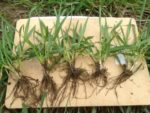Advertise Follow Us
Items Tagged with 'yield'
ARTICLES
Beck's: Chopping Corn Head Provides Up to 15-Bushel Yield Advantage
Residue management at the combine is important, and steps you take to promote good residue practices will positively impact next year's planting pass.
Read More







